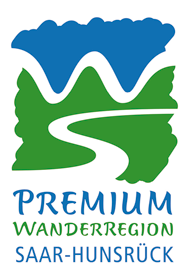Nature
Enjoy the landscape ... experience flora and fauna. In the course of Earth's history, Mother Nature, like a sculptor, has created strange rock formations, deeply cut river valleys, and picturesque landscapes in the Nature Park. Agriculture and wine growing have shaped the landscape picture primarily on the richer soils of the river valleys but also on the higher elevations of the Saargau. Expansive forests of spruce, beech, and oak cover the still higher elevations. Centuries-long cultivation by people has left its mark on a diverse, many-facetted man-made landscape.
Flora
Since the time of human settlement, the vegetation has been profoundly altered. This applies not only to the image of the vegetation but also to the mixture of species. The major portion of the Nature Park exhibits forests as the most probable natural vegetation to be found still able to grow under present conditions on the quartzite ridges. The Saar Valley, where the slopes are cultivated for wine growing and the valley floors used as pastures, is a different kind of landscape. Intensive agriculture exists on the shell limestone hills of the Saargau.
Fauna
The Saar-Hunsrück Nature Park offers habitat for a wide range of indigenous fauna: mammals are red deer and wild boar, marten, fox, badger, beaver, and bats, also the now rare wildcat, which is prevalent in the Saar-Hunsrück Nature Park. In addition, the Park accommodates numerous rare and significant bird species, among them 29 species on the IUCN Red List of Endangered Species. Represented among endemic reptiles are various species of snakes, lizards, and the blindworm, a limbless lizard. Amphibians (varieties of salamanders, newts, toads, frogs) are principally in the valleys.
Geology
As an elevated area and part of the southwest Rhineland Slate Massif, the Hunsrück rises between the Wittlich Depression in the northwest and the Saar-Nahe Basin in the southeast. In the northeast the massif becomes the Taunus on the other side of the Rhine, and in the southwest it descends toward the Paris Basin. The area of the Nature Park contains stones from the Paleozoic, Mesozoic, and Cenozoic geological eras, with Tertiary and Quaternary periods. The oldest stones are elements of a crystalline bedrock underlying many thousand feet/meters of massive Devonian sediment. Tectonic movement during the Tertiary and Quaternary periods is principally responsible for the creation of the present landscape picture. This movement also created the folding and uplifting of the Alps.
Stone Runs
Stone runs are natural rock accumulations arising from the effects of weathering and frost. The ground was permanently frozen during the ice ages. Then it thawed out again during solar radiation and froze again overnight. This constant climatic change created a weathering process characteristic for the Taunus quartzite in the western Hunsrück. The stones split off by temperature changes collected either on gentle slopes or at the foot of slopes. Typical examples for this phenomenon are the "Mörscheider Burr," the "Rosselhalde," or the "Silberich" on the Wildenburger Rücken (ridge), and many other places.
Climate
The climate conditions in the Saar-Hunsrück Nature Park are characterized by the location within the extratropical Prevailing Westerlies. In addition, the region profits from the Gulf Stream, which flows along the west coast of Europe, responsible for a significantly milder climate than would exist normally in this geographical latitude. Therapeutic climate spas in the Saar-Hunsrück Nature Park are Nonnweiler, Orscholz, and the Weiskirchen Kneipp (water) spa.
Forest
The Saar-Hunsrück Nature Park is distinguished by an above-average high proportion of forest (about 47 % of the Nature Park surface). Regardless of the existing stone basis of the ground and the climatic conditions, different groups of arboreal species occur. Near bodies of water or water-logged places, primarily wooded bog terrain exists with alder and willow in the flat locations and moor forests and pine forests in higher elevations. Dryer, warmer regions permit different varieties of oak and birch forests to grow. The greatest portion, however, consists more or less of a mixture of beech and other deciduous trees.
Water
The natural water system in the Saar-Hunsrück Nature Park consists principally of flowing water (Moselle, Saar, Ruwer, Nied, Nahe, Blies, Oster). Bodies of water (Riveris Valley Reservoir, Prims Valley Reservoir, Steinbach Valley Reservoir, Lake Kell, Lake Losheim, and Lake Bostal) occur more seldom and are in some cases artificial lakes. The dominant water course is the Saar, the second largest is the Nahe. Additional mountain streams of the Hunsrück are, for example, the Prims, Riveris, Wadrill, Traun, and Idarbach.
Back to Overview




